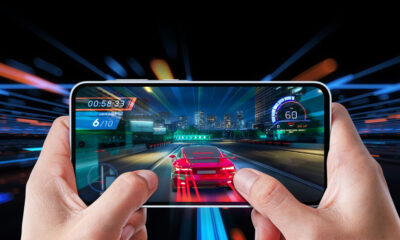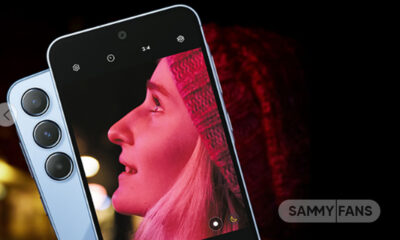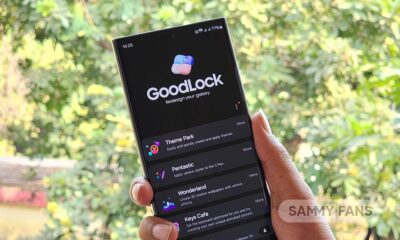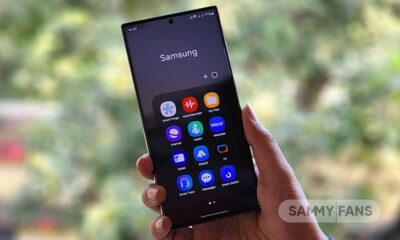Comparison
Privacy Features: Samsung One UI 4.1 vs Android 13, iOS 15, OxygenOS 12, MIUI 13, ColorOS 12, EMUI 12
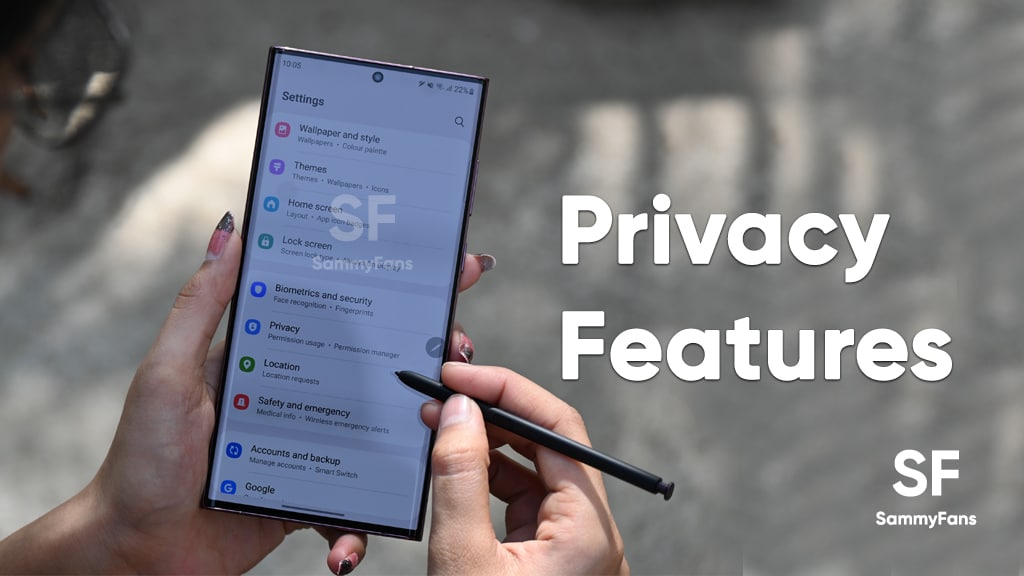
Google Android 12 comes with several new privacy settings, such as a new privacy dashboard, visual indicators for camera and microphone access, and the ability to share approximate location with toggles and apps to enable/disable the camera and microphone.
Samsung has integrated all of these features into One UI 4, the latest version of the custom skin based on Android 12, but the implementation is a little different. If you’ve got the latest Galaxy S22 series device or you have a Samsung phone with One UI 4.0 or higher (One UI 4.1).
Join SammyFans on Telegram

Samsung One UI 4.1 – Privacy Feature
Samsung One UI 4.1 allows users to access all the new privacy settings on their Galaxy devices by going to the Privacy section of the Settings app. Samsung’s execution of new privacy features is a little different. One UI 4.1 on the Galaxy S22 Ultra integrates into the core privacy settings instead of emphasizing Android 12’s new privacy dashboard feature.
As shown in the Privacy Dashboard on Google Pixel devices running Android 12, all authorization usage information appears at the top of the Privacy Settings on Galaxy devices running One UI 4.1. The graph shows the number of apps that have been accessing the camera, microphone, and device location permissions for the past 24 hours.
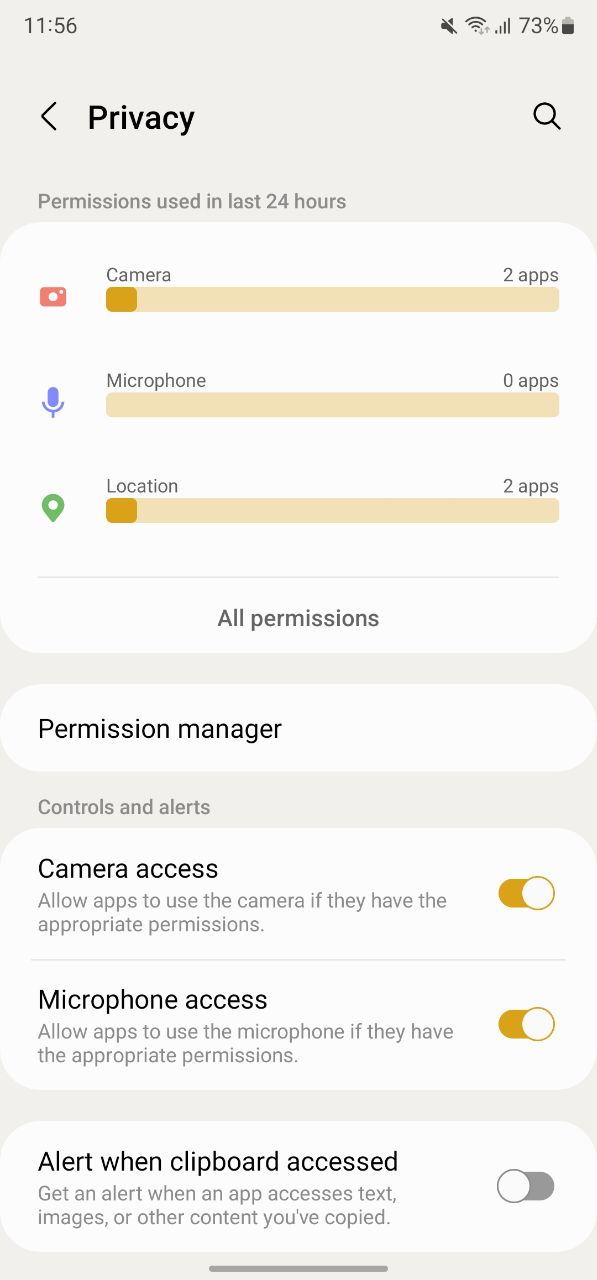
One UI 4.1 Privacy Feature
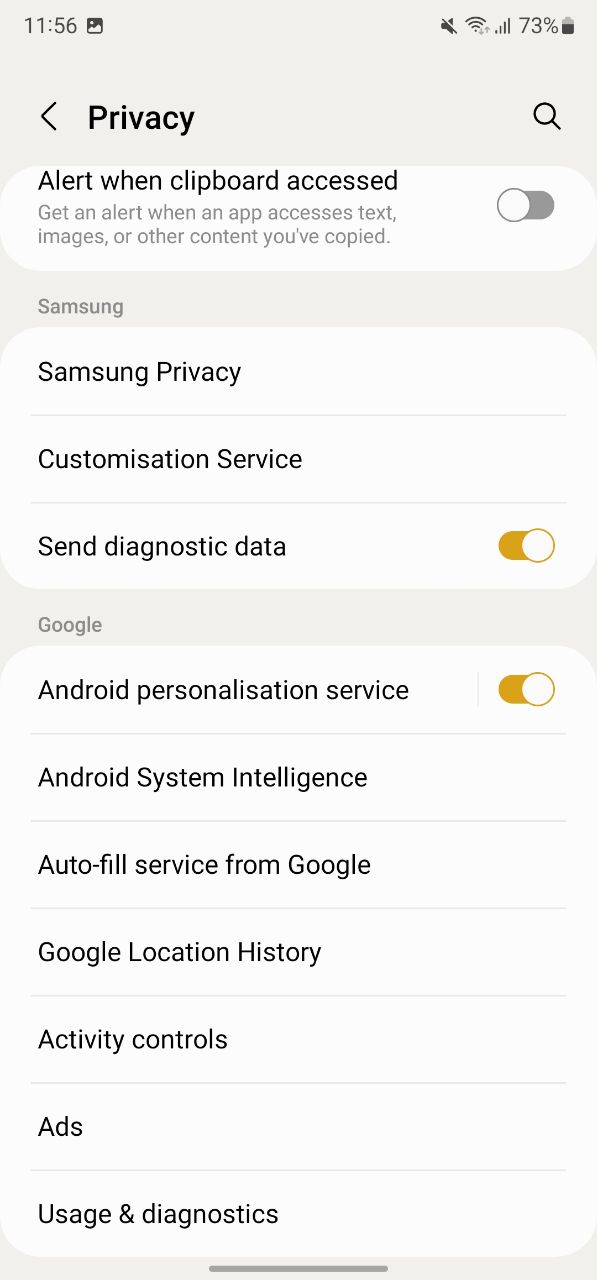
Android 13 (Beta) – Privacy Feature
Google’s Android 12 may be in the process of being released for smartphones and tablets, but the company is already working on Android 13. The company announced the first developer preview for the operating system in February, with updates expected every month until July, after which a final release is expected.
Android 13 is the next major version of Google’s mobile operating system and has already launched two developer previews. Android 13 is a big update for 2022, and Google is adding more privacy functionality. In the second DP, Google adds a new quick settings shortcut to your privacy controls and security settings.
The Security & Privacy button will be available in Quick Settings after you get the latest version. It does not turn anything on or off, but it does link you to a new menu with a mic, camera, and toggles for location access. This new button is labeled “Check Status”. Below the toggles, the new menu also gives you a link to the phone security settings.

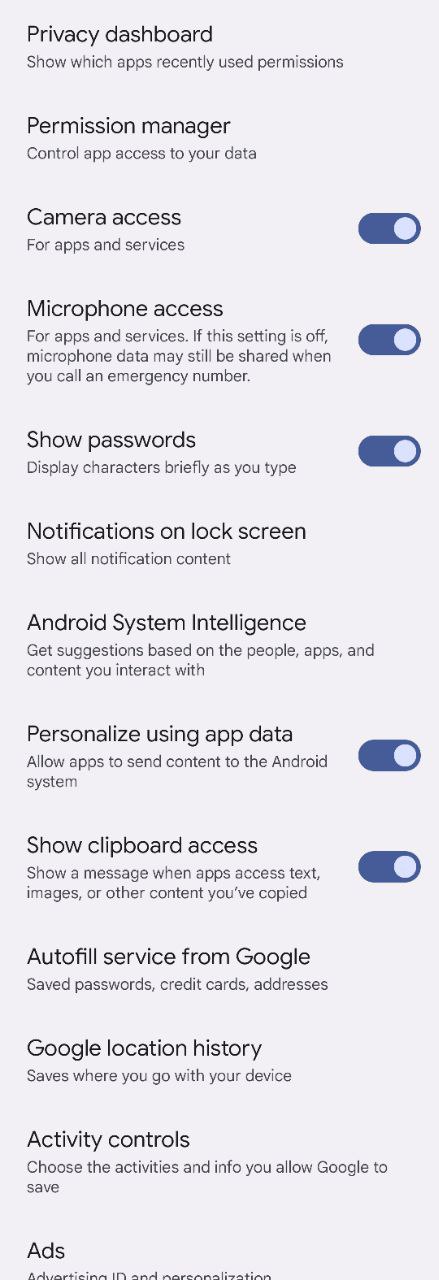
iOS 15 – Privacy Feature
Talking about the Apple iOS 15 Privacy feature, which helps users better control and manages access to their data. As the company continues to expand its commitment to privacy with features such as app tracking transparency and privacy nutrition labels in the App Store, these features represent the latest innovations in Apple’s privacy oversight.

iOS 15 also comes with some additional features for users. With share current location users can easily share their current location with the app without giving the developer further access after that session. And the Advanced Photos limited library access, developers can provide smart functionality such as the recent photos folder for specific albums, even if the user is granted limited access.

OxygenOS 12 – Privacy Feature
Last year, OnePlus officially released the stable version of the OxygenOS 12 update for its eligible devices, and this custom UI is based on Android 12. This latest version comes with many new changes to the overall users’ interface. But with the new Privacy dashboard and the advanced camera and microphone access toggles users can feel very safe and secure.
You will receive a “dot” notification at the top right to indicate that your camera or microphone has been accessed. Extending the notification shade and tapping the small icon will bring up another pop-up indicating which apps have recently accessed the hardware on your device. It’s great for responsiveness and it’s very useful to be able to block access to the microphone and camera with the notification shade toggle tap.

MIUI 13 – Privacy Feature
Now coming to another Chinese customer UI, MIUI 13 it also has some new features and performance enhancements, including new privacy features, a new system font, a bunch of cool wallpapers, and an optimized version for tablets. Xiaomi has also worked to make MIUI 13 more secure for end-users with new features such as Face Verification Protection, Privacy Watermark, and Fraud Protection.
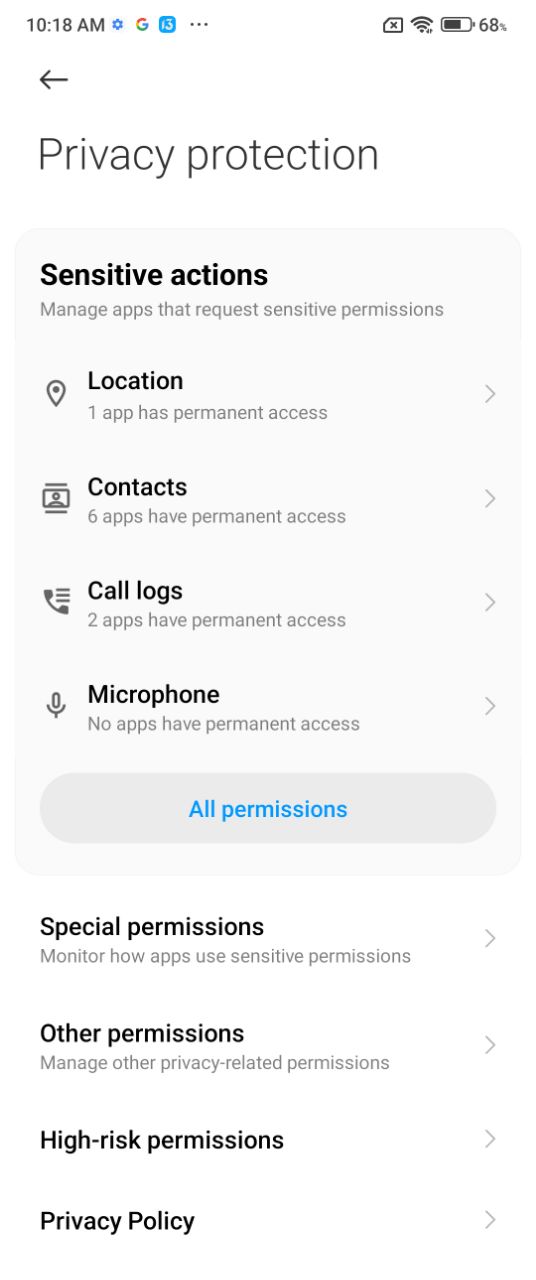
ColorOS 12 – Privacy Feature
ColorOS 12 is also based on the Android 12 operating system offered by Google. And custom UI also offers the latest privacy enhancements. Users can find new features such as a privacy dashboard, microphone, and camera indicators, and approximate location sharing. In addition to integrating these Android 12 features, ColorOS 12 has its own privacy tool called Anti-Peeping Notifications.
EMUI 12 – Privacy Feature
EMUI 12 includes new features that enhance the user experience. On the other hand, the new EMUI 12 improves the security features to help you to manage your phone in a secure manner. The new EMUI 12 security features include several new enhancements to the system to provide a better user experience.
New compact features have been added to the software that allows you to set your watch as a trusted device for your phone for added security. When connected, you can unlock the phone via the Face Unlock feature.
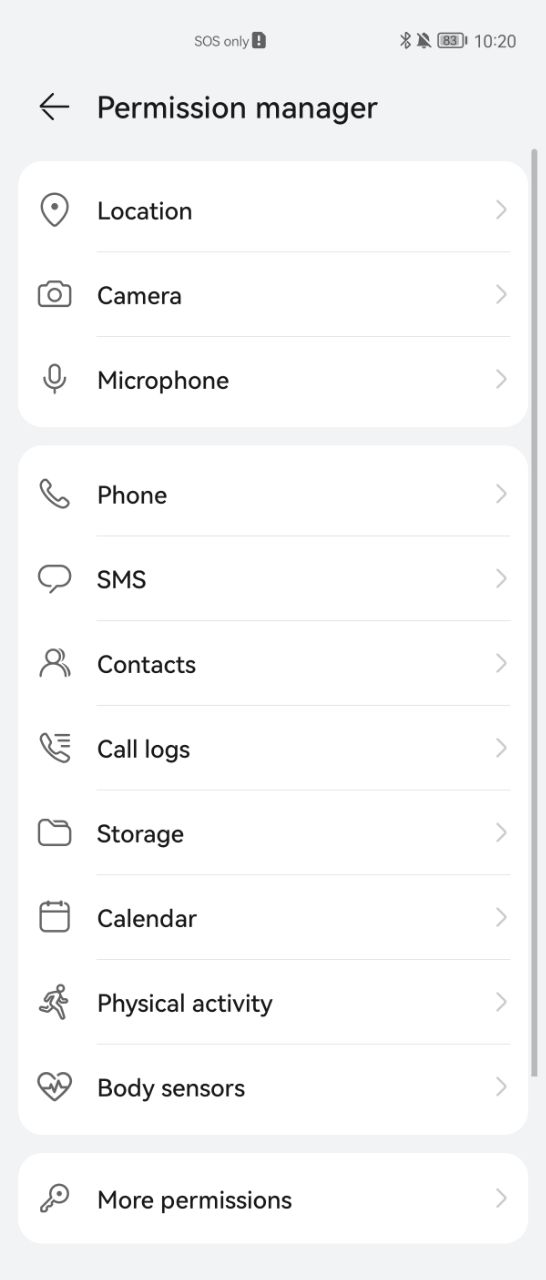
What’s the conclusion?
Android is an open-source OS known for its customizable nature. OEMs typically develop their own custom skins that run on Android to differentiate the UI on their phones from many devices on the market.
Likewise, in the overall experience of One UI 4.1’s Privacy features, Samsung has done a great job. Your Galaxy smartphone provides convenient privacy settings for keeping things like your app usage, location data, and passwords better protected.
Well, I know that you will still give preference to Samsung One UI 4.1 privacy features. If not, let us know, which OEM’s Privacy features you like the most through the comments section and social media.
Get notified –
Aside from SammyFans’ official Twitter and Facebook page, you can also join our Telegram channel, follow us on Instagram and subscribe to our YouTube channel to get notified of every latest development in Samsung and One UI ecosystem. Also, you can follow us on Google News for regular updates.
Comparison
Samsung Galaxy A55 5G vs Google Pixel 7a – Battle of affordables
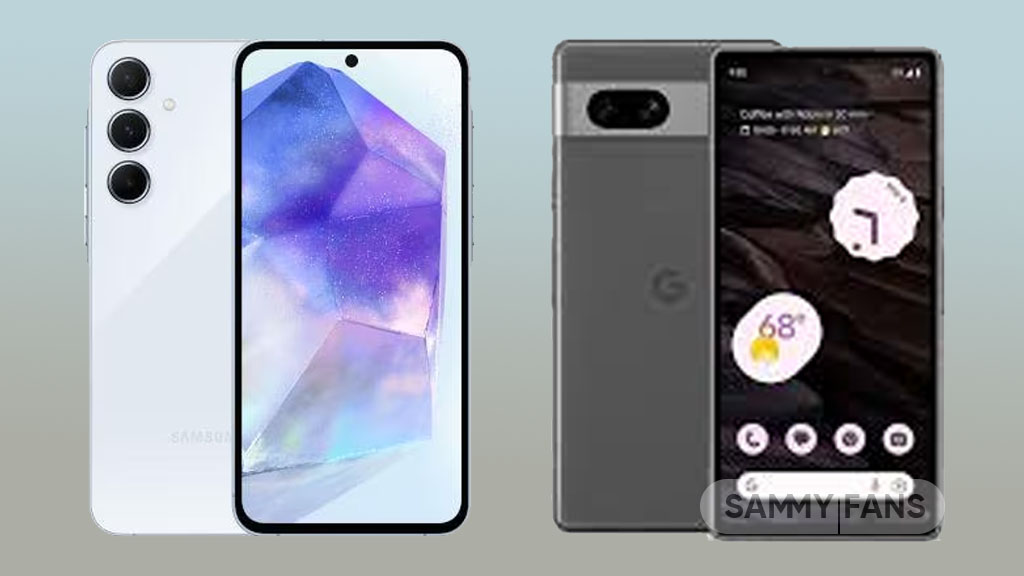
The smartphone market is growing constantly, and Samsung has recently released a new A series phone the Galaxy A55 5G, that can ultimately compete with the one launched back in 2023 by Google, yes, here we are talking about the Pixel 7a.
Samsung Galaxy A55 5G and Google Pixel 7a are two of the latest additions to the affordable segment. Both devices offer impressive features at a budget-friendly price point. So, just get ready to dive into the battle of the latest affordable smartphones.
In this article, we’ll compare these two smartphones and see how they stack up against each other in terms of design, performance, camera capabilities, battery life, and more.
Follow our socials → Google News | Telegram | X/Twitter | Facebook | WhatsApp
Samsung Galaxy A55 5G vs Google Pixel 7a
Display and Design
The Galaxy A55 5G looks sleek and stylish with its slim profile and glass back. On the other side, the Pixel 7a boasts a striking design with its matte finish and horizontal camera module. In terms of display, the Galaxy A55 5G features a Super AMOLED panel, while the Pixel 7a offers an OLED display.
Both devices provide immersive viewing experiences, the newly launched one offers a larger 6.6-inch display with 120Hz refresh rate. While the other one features a 6.1-inch screen with a 90Hz refresh rate.
Processor
Under the hood, the Galaxy A55 5G equips a powerful Exynos 1480 octa-core processor, with 8GB, 12GB RAM, and 128GB, and 256GB storage options ensuring smooth multitasking and lag-free performance. Whereas, the Pixel 7a is powered by a Google Tensor G2 chip paired with 8GB RAM and 128GB storage configuration.
Battery and Connectivity
In terms of battery, the newly launched Galaxy A55 5G is a real winner with support of a 5000mAh battery and 25W charging. As the Pixel 7a only offers a 4385mAh battery with 18W wired and 7.5W wireless charging support. Simultaneously, both devices support 5G connectivity and Bluetooth 5.3.
Camera
Now comes the photography section, for which the world is crazy, Samsung Galaxy A55 5G boasts a versatile triple camera setup consisting of a 50MP Main, 12MP Ultra-wide, and 5MP Macro lens. Whereas, Google’s Pixel 7a sport dual camera setup including a 64MP and 13MP Ultra-wide angle lens.
Software
In terms of software, the Galaxy A55 5G comes pre-installed on the latest Android 14-based One UI 6.1, but it lacks Galaxy AI capabilities. While the Pixel 7a arrived out of the box with Android 13, but it currently offers a pure and premium experience with the latest version of Android.
Color Options
Both devices offer a choice of four color options so that customers can select the one that suits their preference most. Like the Galaxy A55 is available in Iceblue, Lilac, Navy, and Lemon, while, the Pixel 7a is offered with Charcoal, Snow, Sea, and Coral colorways.

Comparison
Galaxy A35 Vs Nothing Phone 2a: Samsung leads 2024 mid-range segment
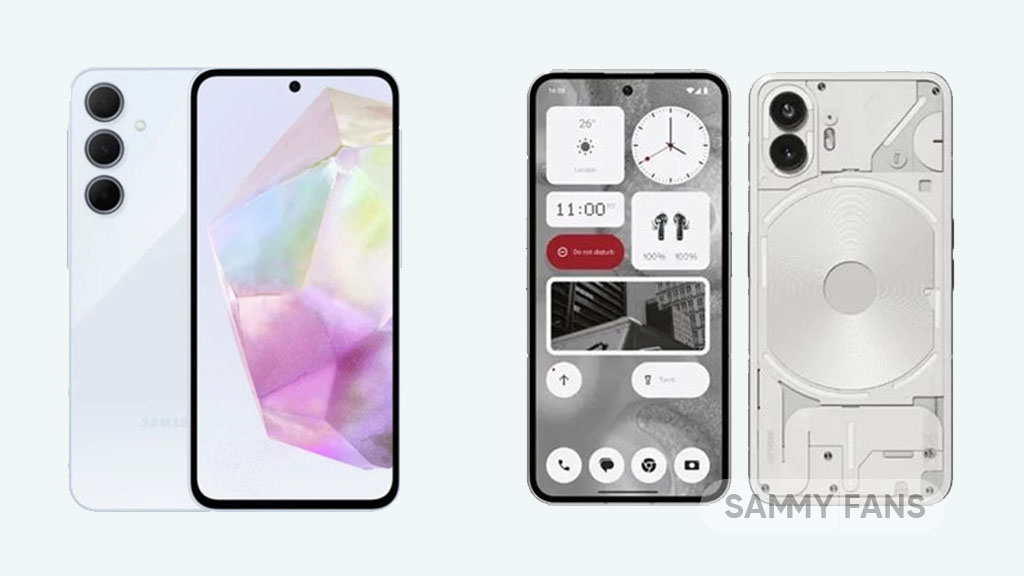
Looking to buy a new budget-friendly smartphone packed with ultimate features, functions, and capabilities, but getting confused between newly released devices – Samsung Galaxy A35 5G and Nothing Phone 2a?
If yes, then don’t think twice as Samsung leads the 2024 mid-range segment and you are at the right place because here we will discuss the design, display, performance, camera capabilities, and more aspects of both these devices, to help you decide which one is the perfect fit for you and deserves to be in your pocket this year.
Samsung Galaxy A35 vs Nothing Phone 2a
Design
Starting with the design, those who love a slim profile with premium build quality can go with Galaxy A55 5G while those who prefer to go with a minimalist approach and unique look can opt for Nothing Phone 2a. Both phones have remarkable appearance, so the choice depends on your personal preference.
Display
The Galaxy A35 5G offers a 6.6-inch Super AMOLED display with 1080 x 2340 pixels. While the Nothing Phone 2a features a bigger 6.7-inch AMOLED screen with 1084 x 2412 pixels. Overall, both device has the ultimate visual experience and smoother scrolling with a 120Hz refresh rate.
Performance
In terms of performance, the Galaxy A35 5G is powered by an Exynos 1380 processor to offer smooth multitasking and ultimate gaming, and seamless performance. On the other side, the Nothing Phone 2a features a MediaTek Dimensity 7200 Pro chip to perform your everyday tasks.
Camera
Talking about the camera capabilities, so the Galaxy A35 5G packs a triple-camera setup at the back including 50MP Wide Angle, 8MP Ultra Wide, and 5MP Macro lens to capture detailed and vibrant photos. While Nothing Phone 2a offers a 50MP dual camera, with 13MP and 32MP cameras on the front.
Battery and Software
The Galaxy A35 and Nothing Phone 2a both pack 5000mAh battery but one offers 25W fast charging, while the other provides the ultimate 45W charging support. In terms of software, the Galaxy A35 runs on Android 14-based One UI 6.1 custom skin, and, Nothing Phone 2a is powered on Nothing OS 2.5 software based on Android 14 OS.
Other details
Other details of both the phones are similar in some aspects like both are available in 8GB RAM with 128GB storage configurations, launched in March, support 5G connectivity, in display fingerprint scanner, and much more.
Follow our socials → Google News | Telegram | X/Twitter | Facebook | WhatsApp
In conclusion, both devices have their strengths and weaknesses, but as Samsung is known to deliver a more optimized experience to its users and elevated software update support as compared to Nothing Phone 2a, so we recommend users to go with the Galaxy A35 5G and the rest of the choice is all yours.

Comparison
Samsung Galaxy A35 vs Nothing Phone (2a): Specs Comparison

Samsung Galaxy A35 which will be unveiled on March 11 is expected to come with several sophisticated features, while Nothing Phone (2a) has already made its splash in the market with attractive design. So let’s have a quick specs comparison of the newly released Nothing Phone (2a) and the upcoming Galaxy A35.
To be mentioned, both these devices come under the budget segment, attracting a range of consumers who want prominent capabilities but don’t want to spend a big amount. So, let’s dive into the details and see how these two devices stack up against each other in the battle for the best affordable phones.
Samsung Galaxy A35 vs Nothing Phone (2a) – Specs Comparison
Samsung Galaxy A35 5G is expected to equip a 6.6-inch FHD+ display, while the Nothing Phone (2a) features a larger 6.7-inch FHD+ screen with 120hz and peak brightness of 1650 and 1300 nits respectively. Moving on, the Galaxy A35 boasts Exynos 1380 chip while, Phone (2a) packs Dimensity 7200 Pro.
In the photoholic users, the Galaxy A35 offers a triple camera setup consisting of 50MP, 8MP, and 5MP sensors, Whereas, the Nothing Phone (2a) includes a 50MP wide and 50MP ultra-wide dual camera. The newly released device comes with a Plastic body, while the upcoming will have Gorilla Glass Victus+ at the back.
Other than these there are some more aspects which make both the devices a good contender in the affordable market. Lastly, the Galaxy A35 5G is expected to be priced at €379, while, the Nothing Phone (2a) carries a price tag of €319 in Europe.
Follow our socials → Google News | Telegram | X/Twitter | Facebook | WhatsApp




